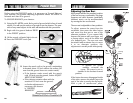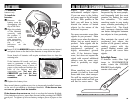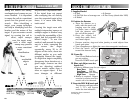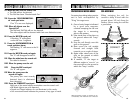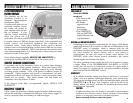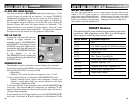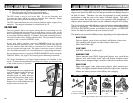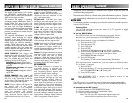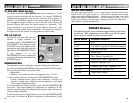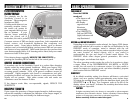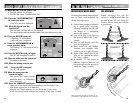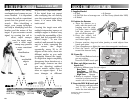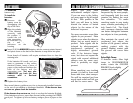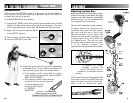
13
AUDIO TARGET IDENTIFICATION
(motion modes only)
While the LCD (Liquid Crystal Display) is very accurate in identifying buried
objects, the user in the field does not always maintain the display screen in
his field of vision. Therefore, we have incorporated an audio feedback
mechanism to alert the user to the nature of buried objects. This audio
feedback system first alerts the user to the presence and classification of
objects, whose nature and location can be confirmed using the LCD display.
The 4-tone audio target identification system functions only in the motion
modes of operation. The detector must be in the DISCRIMINATION,
NOTCH or ALL-METAL modes, as indicated on the display. In PINPOINT
mode, the detector will emit only a monotone sound.
The detector can sound four different tones, depending on the object detected.
BASS TONE
Ferrous objects, such as iron and steel, will induce a bass tone.
The smallest gold objects can also induce a bass tone.
Most Steel bottle caps.
LOW TONE
Pull-Tabs, nickels & smaller gold
MEDIUM TONE
Newer pennies (post-1982), larger gold objects, zinc, small brass
objects, and most bottle screw caps will induce medium tones.
Many recent vintage foreign currencies will induce medium tones.
HIGH TONE
Silver and copper coins, larger brass objects, older pennies (pre-
1982), and highly oxidized metals will induce high tones. Quarters,
dimes and other precious coins fall into this category.
Audio Target Identification (ATI) classifies metals into four categories.
BASS TONE
Nails, Iron Objects,
& Smallest Gold Objects
LOW TONE
Pull Tabs, Nickels,
& Smaller Gold
MEDIUM TONE
Zinc Pennies (Post
1982), Larger Gold
Objects, Many screw
caps
HIGH TONE
Copper, Silver & Brass
Copper Pennies (Pre
1982)
12
BASIC OPERATION
continued
4) Press ZAP. An "R" appears under the segment to be eliminated.
5) Pass the search coil over the same object again.
The undesirable object is eliminated from detection
The ZAP control is easy to use in the field. As you are detecting, and
encounter an object which you wish to eliminate from detection, simply
press the ZAP touch pad after detecting the object.
The ZAP control eliminates the most-recently detected object category from
detection. The category eliminated is indicated with an "R".
PIN POINT MODE
Since long-buried objects can appear exactly like the surrounding soil, the
process of finding the exact location of a small object, such as a coin, can be
time-consuming and frustrating. Objects buried many inches deep present
an especially daunting challenge. In addition, during the unearthing process,
care must be taken not to damage valuable relics. The best solution to these
problems is the no-motion PINPOINT mode.
At any time during operation, press the PINPOINT touch pad, and the
detector enters the no-motion mode. In the PINPOINT mode, any object in
the coil’s detection field will induce a monotone hum. Pass the coil slowly
over and around the target zone. The target is where the sound is loudest.
See “In the field techniques” for more information on pinpointing techniques.
Be sure that the detector is properly GROUND BALANCED before using the
PINPOINT MODE. See page 20 for manual ground balancing instructions.
The Target Identification and Target Depth indicators are disabled in this
mode. To discern the identification and depth of an object, you must use one
of the motion modes of operation.
HEADPHONE JACK
Using headphones (not supplied) with
your metal detector makes it easier to
identify subtle changes in the
threshold levels for better detection
results, and also reduces drain on the
batteries. The Legacy 3300 Metal
Detector has a stereo headphone jack
located at the rear of the case.



